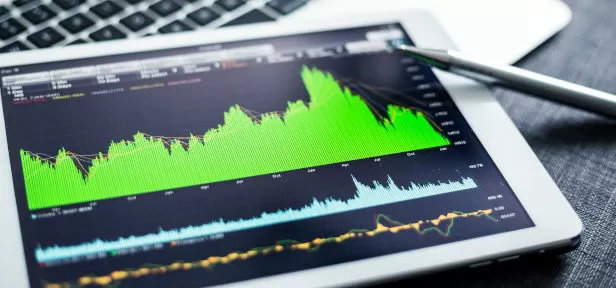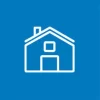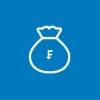If you would like to receive a detailed comparison of the costs and performance of Swiss retirement funds, simply enter your email address in this field and click on “Request free PDF”.

Swiss Retirement Funds: Major Differences Between Funds
Switzerland’s independent online comparison services moneyland.ch studied the performance and costs of Swiss retirement funds based on the pillar 3a. The 2019 study shows that Swiss pillar 3a retirement funds generally have high costs, but that there are major differences in costs between individual funds.
Interest rates for savings in Switzerland are at an all-time low. That also applies to pillar 3a retirement savings accounts, which now have an average interest rate of 0.2% per year. In the face of the low interest rates offered by banks, investing in mutual funds which meet pillar 3a requirements has become a lot more attractive.
“But retirement funds are not the best fit for all retirement planners,” believes moneyland.ch CEO Benjamin Manz. There are also huge differences between different retirement funds, as this study shows.
Differences between retirement funds
moneyland.ch analyzed the performance and fees of 61 Swiss retirement funds (the detailed comparison is available below).
The verdict: The average total costs across all Swiss of the analyzed retirement funds is 1.12% per year (based on the past 10 years, with all funds equally weighted). That figure shows that pillar 3a-eligible retirement funds are expensive.
However, that is the average figure. Some funds have much higher costs than that. The most expensive pillar 3a retirement funds have total annual costs equal to 1.58% of invested assets. When analyzed over a 1-year term (front-end and back-end loads are applied in the same year), the most expensive funds have total costs of 3.2%.
There are also major differences in fund performance. Over the past 10 years, the performance of funds has largely correlated with their stock components. “Stocks have performed exceptionally well in the past 10 years. Over that time span, the rule of thumb has been: the higher the stock component of a fund, the better its performance,” states moneyland.ch analyst Felix Oeschger.
But there is no guarantee that the trend will continue. If stock prices fall again, the exact opposite will apply. Funds with high stock components will perform worse than others. “Funds with high stock components also have above-average costs,” explains Oeschger.
The administrative costs of retirement funds (TER)
The term total expense ratio (TER) is the most important indicator of the costs of a fund. It includes administrative fees and other costs generated by a fund. The TERs of the retirement funds included in the study vary between 0.24% (money market funds) and 1.7% per year. By comparison, Swiss SMI-tracking ETFs with TERs of 0.2% per annum are available.
But front-end loads, back-end loads and the cost of holding fund shares at a third-party custodian bank are not accounted for in TERs. Depending on the fund, these can add a significant cost. Taking all costs into account when comparing funds is essential.
Issuing fees and custodial fees
Some service providers charge annual custodial fees in addition to the costs included in TERs. Custodial fees can be as high as 1% per annum, as is the case with Swiss Life for which UBS acts as custodian bank. In addition to Swiss Life, custodial fees also apply to funds from Baloise Bank SoBa (Credit Suisse is the custodian bank), the Luzerner Kantonalbank and the Zürcher Kantonalbank.
The TER and custodial fees must be paid every year. Other fees are only charged on a one-off basis. These include front end loads (issuing fees) which are charged when you buy fund shares and back-end loads (sales charges) which are charged when you sell fund shares. Some funds have front end loads equal to 2% of the amount invested. “Funds with high front-end loads are best avoided,” states Benjamin Manz. Service providers which charge front end loads include Baloise Bank SoBa, Luzerner Kantonalbank, Mobiliar, Raiffeisen, Zürcher Kantonalbank and Zurich Insurance.
Total costs compared
moneyland.ch calculated the cost of a 100,000-franc investment over a 10-year investment term. The results show that a retirement planner could pay anywhere between 2374 francs and 15,757 in total costs, depending on which fund they use. Retirement funds from Swiss Life and UBS are among the most expensive. The average total costs of actively-managed funds are 1.19% per year, compared to 0.94% per year for passively-managed funds.
You can compare the total costs based on any investment size and term using the interactive retirement fund comparison on moneyland.ch.
Fund performance compared
For its study, moneyland.ch analyzed cumulative performance records for the past 3, 5 and 10 years. The results show that the higher the stock component of retirement funds, the better they have performed over the past 10 years.
Over the past 3 years, retirement funds with high stock components have delivered an average performance of 15.01% across the full term. Over the past 5 years, average performance has totaled 18.6%. These calculations are based on performance after deducting TERs, with all funds weighted equally.
Retirement funds with low stock components, on the other hand, have had a total average performance of 7.4% over the past 3 years and 14.2% in the past 5 years. This trend can change in the coming years if the stock market turns.
Another important aspect of stock components is the costs generated. As a general rule, the more “risky” a fund is – with risk being gauged by the stock component – the higher the fund’s total costs are. The study shows that, over a 10-year term, retirement funds with minimal stock components have an average total cost of 1.13% per year. Funds with very high stock components have an average total cost of 1.19% per year.
Alternatives to conventional retirement funds
There are viable alternatives to investing through conventional retirement funds. The robo advisor VIAC offers an online pillar 3a investment solution which can be accessed via a web portal and mobile app. VIAC charges a 0.52% flat fee plus fund TERs. Funds used by VIAC have average TERs as low as 0.02% per annum.
Brokers with low fees
Saxo Bank Switzerland
Licensed Swiss bank (FINMA)
No custody fees when securities lending is activated
Free expert research and trading signals
Cornèrtrader
Swiss online bank
No custody fees for stocks
Free market research and trading signals




